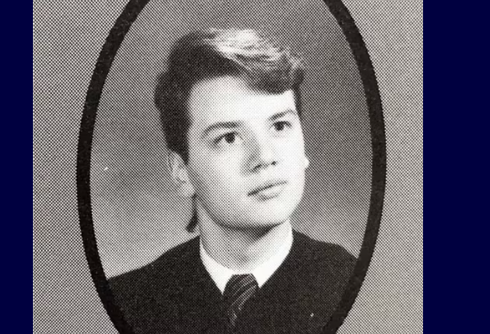KUALA LUMPUR, Malaysia — Two HIV-positive patients in the United States who underwent bone marrow transplants for cancer have stopped anti-retroviral therapy and still show no detectable sign of the HIV virus, researchers said Wednesday.
The Harvard University researchers stressed it was too early to say the men have been cured, but said it was an encouraging sign that the virus hasn’t rebounded in their blood months after drug treatment ended.

Timothy Henrich of the Harvard-affiliated Brigham and Women’s Hospital in Boston speaks at the International AIDS Society Conference 2013 in Kuala Lumpur, Malaysia, Wednesday, July 3, 2013.
The first person reported to be cured of HIV, American Timothy Ray Brown, underwent a stem cell transplant in 2007 to treat his leukemia. He was reported by his German doctors to have been cured of HIV two years later.
Brown’s doctors used a donor who had a rare genetic mutation that provides resistance against HIV. So far, no one has observed similar results using ordinary donor cells such as those given to the two patients by the Harvard University researchers.
Never Miss a Beat
Subscribe to our newsletter to stay ahead of the latest LGBTQ+ political news and insights.
The researchers, Timothy He nrich and Daniel Kuritzkes of the Harvard-affiliated Brigham and Women’s Hospital in Boston, announced last year that blood samples taken from the men – who both had blood cancers – showed no traces of the HIV virus eight months after they received bone marrow transplants to replace cancerous blood cells with healthy donor cells. The men were still on anti-HIV drugs at the time.
The men have both since stopped anti-retroviral therapy – one 15 weeks ago and the other seven weeks ago – and show no signs of the virus, Henrich told an international AIDS conference in Malaysia on Wednesday.
“They are doing very well,” Henrich said. “While these results are exciting, they do not yet indicate that the men have been cured. Only time will tell.”
The HIV virus may be hiding in other organs such as the liver, spleen or brain and could return months later, he warned.
Further testing of the men’s cells, plasma and tissue for at least a year will help give a cleare r picture on the full impact of the transplant on HIV persistence, he said.
Kuritzkes said the patients will be put back on the drugs if there is a viral rebound.
A rebound will show that other sites are important reservoirs of infectious virus and new approaches to measuring these reservoirs will be needed in developing a cure, Henrich said.
“These findings clearly provide important new information that might well alter the current thinking about HIV and gene therapy,” Kevin Robert Frost, chief executive of The Foundation of AIDS Research, said in a statement. “While stem cell transplantation is not a viable option for people with HIV on a broad scale because of its costs and complexity, these new cases could lead us to new approaches to treating, and ultimately even eradicating, HIV.”
This material may not be published, broadcast, rewritten, or redistributed.













